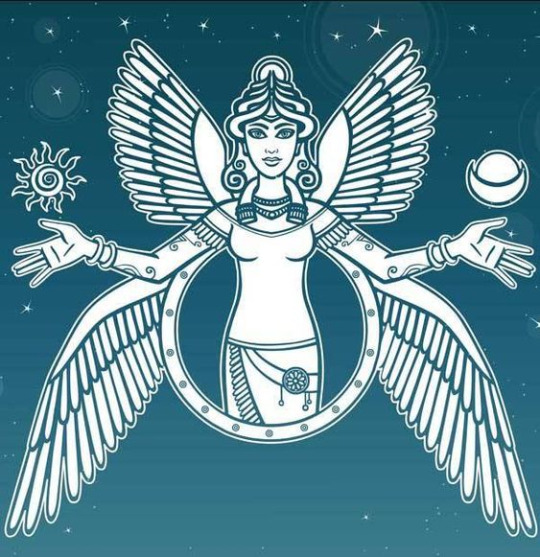#Homer are you sure this nickname wasn’t given by the Greeks instead?
Text
So basically, ἄναξ (anax), or ϝάναξ (wanax), is a very Mycenaean word, being a title for the kings of Mycenae (higher than basileus), and it means “lord, king”.
That is why in the Iliad Agamemnon is always referred to as “ἄναξ ἀνδρῶν” (the lord of men), since he was the high king of Mycenae, and the leader of other kings.
There is another person who has an “anax” in his name. One that was born in a city hostile to Mycenae because of the war, one that was of a people who probably didn’t speak Greek in their times, one that was a victim of the conquest of his city (by the Greeks led by a Mycenaean Wanax), one that never had a chance to become a leader.
One that was named as “lord of the city”—Astyanax.
How ironic.
#tagamemnon#astyanax#agamemnon#the iliad#ancient greek#mycenae#scamandrius#let the rambling begin#when you realize that Astyanax was a nickname given by the Trojans because of his heritage#the irony is that they had chosen a Mycenaean word for the nickname#while the Mycenaeans at the moment was leading a war against them#and has conquered them eventually#Homer are you sure this nickname wasn’t given by the Greeks instead?#the double irony of his name has just made things far worse
50 notes
·
View notes
Text
Is Jesus a mythical figure, based on the Sumerian goddess Inanna? Um, NO, and here is why:

Inanna was the Sumerian goddess of war, fertility and love. Queen of both Heaven and Earth, Inanna was known to the Babylonians as Ishtar (though the stories about Ishtar have differences from that of the Sumerian Inanna, reflecting different theologies). Inanna was considered the protector of prostitutes, and she was at times depicted at the keeper of the tablets of the Me, or cosmic laws. She fell in love with a minor god named Dumuzi (known to the Babylonians as Tammuz), only to lose him to the underworld. In some accounts this was for half of the year (fall and winter). When she had him for the other half, plants flourished (spring and summer).
Jesus Mythicists will claim that Jesus is based on this goddess, or that her cult at least influenced the Gospel stories.
Considering this, I think it is an appropriate time to laugh.

Now that that’s over, let’s try to answer this question again without laughing.
Is Jesus based on…Inanna?
Let’s see why this is NOT the case.
1. Born of a virgin?
No, she is the daughter of the moon god Sin, aka Suen aka Nanna, and Ningal (though in some sources her mother is not named). She was conceived the old-fashioned way.

3. Visited by Wise Men or Shepherds after she was born?
No. Her lover Dummuzi was the god of shepherds, but there is no story of him visiting her after her birth.
4.Star proclaimed her birth?
No. She was identified with the planet Venus (aka the “Morning Star”), but this wasn’t a sign of her birth. If anything, it was symbolic of her descent into the underworld and return from it (Venus disappears and reappears in the night sky).
5. Miracle worker?
Yes, just like any other deity, big deal.
6. Bread and wine miracles?
No.
7. Clothes stripped?
When Inanna went to the underworld, she had to pass through seven gates. At each gate, she had to discard jewelry (and at one point even her Me tablets). Eventually, at the seventh gate, she shucked her dress.
According to Jesus Mythicists, this is supposed to be the basis for Jesus being stripped naked before being hung on a cross.
However…there is a problem.

You see, it was CUSTOMARY for those being crucified to be naked ! Roman soldiers were allowed by law to take the clothes of a person who was being crucified.
And what were the Roman Soldiers doing to Christ’s clothes in John 19:23-24?
Taking his clothes and casting lots, to see which one of them to get the clothing!
The story of Jesus being stripped naked wasn’t based on Inanna’s forced striptease; it was based on the Roman method of crucifixion.
8. Crucified?
No. While in the Underworld, the 7 judges of the underworld killed her with the “perishing stare of death.” Afterwards she was hung on a hook. (remember, Jesus died on the “upper” world, not under).
Oh, and by the way: Crucifixion wasn’t invented in ancient Sumer (the first civilization). It was invented in the 6th century BC, around 1400 years after the Sumerian Civilization ended.
Jesus Mythicists will protest, however, saying that, despite these facts, both Jesus and Inanna hung while dead; Inanna on a hook, Jesus on a cross. Thus, the latter must be derived from the former!
This objection is so weak that it doesn’t even deserve a response...But I’ll give one nonetheless for the fun of it.
In UFC 3, a fighting event held in 1994, a master martial artist named Keith Hackney (5 feet 11, 200 pounds) fought Emmanuel Yarborough, a sumo wrestler who was 6 feet 8 inches tall and weighed at the time over 600 pounds. Yarborough was strong enough to curl 315 pounds 20 times in a row. In terms of size and strength, Keith Hackney was outmatched, but by the time the fight was over…Keith Hackney emerged victorious. He was nicknamed “The Giant Killer” afterwards.
Now, Keith Hackney’s accomplishment is quite similar to fairy tale and mythological stories involving normal sized men or women facing giants, overcoming them with guile (think “Jack the giant killer”, or Odysseus and the Cyclops in Homer’s “Odyssey”). He did use superior fighting styles and strategies in that fight, thus outsmarting and outfighting the Sumo colossus.
Does this similarity with fairy tale stories like Jack the Giant Killer and myths like Odysseus mean that…Keith Hackney never did defeat Emmanuel Yarborough? Does it mean that his fight with Emmanuel Yarborough is a fiction, based on fairy tale stories and myths of normal sized people overcoming giants?
Then why would Jesus’ crucifixion be based on Inanna hanging on a hook?

9. Went to the underworld?
After he died, Jesus descended into Sheol (In the New testament called “Hades), which was pictured as being in the earth (Acts 2:31, Ephesians 6:8-10, see also Matthew 12:40). This was the Hebrew underworld. Afterwards, Jesus rose from the grave. True, Inanna went to her version of the underworld and returned as well…but so did numerous ancient mythological figures (and even monsters) who are never said by Jesus Mythicists to have striking parallels to Christ.
Hades (who shared the same name as the underworld. He was given charge of the underworld by Zeus, his older brother. He nevertheless rose back to the world of the living for a short time, to kidnap Persephone).

Persephone, as stated above, was kidnapped by Hades, who took her to the Underworld. She was eventually allowed to leave , but before she went she was tricked to each the Pomegranate of death. As a result, she can only stay on the earth for two thirds of every year. The other third, she has to go back to the underworld).
There were several others, such as Orpheus, Sisyphus ( (Had told his wife not to bury him or make offerings to him (customary offerings for the dead) if he passed away. When he did die, he told Hades about his lack of burial and offerings and asked permission to go back to earth to make sure that these things were done. Hades let him go…but when he realized that he had been duped, he dragged him back to the Underworld) , Hermes ( Watched over Hercules while he was in the underworld, but left when Hercules did. He also accompanied the spirits of the dead as they made their journey to the underworld. Being the messenger of Zeus, he would have no doubt sent messages to the god Hades.), Theseus (Theseus (went to the Underworld, was imprisoned by Hades, but Hercules freed him and brought him back to earth) and Cerberus, the three headed offspring of the monsters Typhon and Echidna (the latter half woman, half snake).

The latter lived in Sicily in one version of her myth, the Peloponnese in another. Thus, Cerberus would have been conceived while on earth, only to be taken to the Underworld to keep its spirits within…only for Hercules to bring it out of the underworld and take it to the ancient Greek city of Mycenae.
Not much of a parallel then.
Keep in mind: Inanna died while in the Underworld; Jesus died before going there.
10. Dead for three days?
No.
After waiting three days, the goddess Ninshubur (aka Nincubura) went to several gods, pleading for help. She visited Enlil first, but he refused. She visited Inanna’s father Sin/Seun/Nanna next, but he also refused. Then she visited Ea aka Enki, who, despite being angry with Inanna, agreed to help.
How long did this take?
How long was Inanna in the Underworld?
We don’t know. The ancient texts do not say.
Indeed, we have to remember that Ninshubur had to wait three days after Inanna descended into the Underworld before seeking aid, not three days after Inanna died (Inanna didn’t know that she was going to be killed). We don’t know how long Inanna’s journey through the Underworld took, or at which point in those three days that she was killed.
11. Resurrected?
Yes, but not by her own power.
Ea made two sexless beings and sent them to the underworld, to ease the suffering of Ereshkigal, Inanna’s sister and Queen of the Underworld. When Ereshkigal asked them what reward they would like, they asked that they would be allowed to revive Inanna. This was granted, and Inanna resurrected (though some sources use the word “reborn”), and eventually returned to the upper world.
Inanna’s resurrection is more similar to those in the Bible involving mere humans who were resurrected by God, instead of Christ, who is God incarnate and resurrected…himself.
Not much of a parallel, eh?
Folks, the comparisons between Jesus and Inanna are abysmally weak. Indeed, she oddly enough has more in common with Moses than with Christ (Had a set of law tablets, brought plagues on Sumer (Turned all the well water into blood, then brought floods, and finally sandstorms. She did this because the Shu-kale-tuda, a gardener’s son and Sumerian, raped her while she was asleep), but these similarities don’t mean that Moses was a fictional character based on Inanna (once again, consider the parallels between Alexander the Great, a historical figure, and Achilles, a mythical one. Recall also the similarities between the Novella “Futility/Wreck of the Titan” and the Titanic disaster, which occurred 14 years later, as well as Edgar Allan Poe’s “The Narrative of Arthur Gordon Pym of Nantucket” and the sinking of the Mignonette. Plus, the differences between Moses and Inanna FAR, FAR outweigh their few similarities.
No, Jesus was not based on Inanna, who was a myth.
Jesus…is real.
Sources:
“Epics of Early Civilization” by Michael Kerrigan, Alan Lothian, Piers Vitebsky, and Jeremy Black (Consultant), 36-41
“The Ultimate Encyclopedia of Mythology” by Arthur Cotterell and Rachel Storm, 288 (See also 30-31, 47, 51, 74-75, 82-83
https://www.ancient.eu/Inanna/
https://www.youtube.com/watch?v=fb4KIFtdRPI&feature=emb_title
“The Penguin Dictionary of Classical Mythology” by Pierre Grimal, 133, 189, 197-99, 434
UFC 3 DVD
https://www.sherdog.com/news/articles/1/Keith-Hackney-Where-Is-He-Now-30163
https://www.imdb.com/name/nm0352563/
https://www.imdb.com/name/nm1156762/?ref_=nmbio_bio_nm
https://www.youtube.com/watch?v=gVs4930ERGw&feature=emb_title
https://books.google.com/books?id=5lmrCQAAQBAJ&pg=PT90&dq=Who+is+Inanna%27s+mother?&hl=en&sa=X&ved=2ahUKEwiO-uum7ZHlAhUPiqwKHYDgB-4Q6AEwA3oECAYQAg#v=onepage&q=Who%20is%20Inanna's%20mother%3F&f=false
https://www.exploratorium.edu/ancientobs/chichen/HTML/caracol3.html
https://www.history.com/topics/ancient-middle-east/sumer
“The IVP Bible Background Commentary: New Testament” by Craig S. Keener, 313
“In the Footsteps of Jesus” (A National Geographic Book), by Jean-Pierre Isbouts, 263
https://www.britannica.com/topic/crucifixion-capital-punishment
https://threadreaderapp.com/thread/1172309229585125376.html?refreshed=yes
https://sirtravisjacksonoftexas.tumblr.com/post/628113211750776832/do-supposed-parallels-between-the-gospels-and
“Encyclopedia of Gods” by Michael Jordan, 114-15
0 notes